Dryslwyn Castle | Visit Amazing Welsh Castles
Dryslwyn Castle is a ruined medieval fortress in Carmarthenshire, Wales. It stands on a steep hill overlooking the River Tywi. The castle offers views of the surrounding valley and nearby countryside.
It is a significant example of a native Welsh castle, built during a period of resistance against Norman influence.
The remains include parts of a curtain wall, a gatehouse, and tower foundations. Dryslwyn Castle is known for its strong links to the princes of Deheubarth, a medieval Welsh kingdom.
Today, it is a scheduled monument cared for by Cadw, the historic environment service of the Welsh Government.
Quick Facts
Location: Dryslwyn, Carmarthenshire, Wales
Type: Native Welsh hilltop castle
Construction Period: Late 13th century
Founders: Likely built by a Welsh prince of Deheubarth, possibly Rhys ap Maredudd
Current Condition: Ruined, with surviving curtain walls and towers
Dog Friendly: Dogs allowed on leads
Managed by: Cadw (Welsh Government heritage agency)
Entry Fee: Free to visit
Brief History
Dryslwyn Castle first appears in records around 1245, though its foundations likely date to the early 13th century. The nucleus of the fortress was constructed by the princes of Deheubarth, possibly Rhys Gryg, in the 1220s, to command the Tywi Valley.
In 1234, Maredudd ap Rhys Gryg inherited both the castle and the lands. He continued its development, adding the northern ward and new internal chambers. After his death in 1271, the site passed to his son Rhys ap Maredudd.
Rhys later sided with the English crown, gaining grants and embarking on considerable expansion of the castle, including a third, outer ward and a suite of chambers, such as a chapel tower—by the 1280s. In mid‑1287, he rebelled against Edward I. His uprising culminated in a siege by 11,000 English troops led by Edmund of Cornwall in August–September 1287. The castle held out for three weeks before falling, after key wall sections were undermined. Rhys escaped but was captured in 1292 and executed in York for treason.
The English Crown took control, appointing officials and carrying out repairs. The castle saw unrest again during Glyndŵr’s rebellion: captured by Welsh forces around 1403, it was retaken by Henry IV in 1409. Following this, the castle was deliberately slighted to prevent future military use, with gatehouses blocked, stones removed, and buildings set alight. Since then, it has remained a ruin managed by Cadw.
Features and Layout
Dryslwyn Castle sits on an isolated rocky hill with three concentric wards that follow the contours of the summit.
Inner ward: A polygonal curtain wall encloses the core, fitting the steep hillside. Inside are foundations of the great hall, chapel tower, garderobe and kitchen.
Gatehouse and round tower: The northern gatehouse (13th century) provided entry. A round tower on the south side served as a keep.
Middle and outer wards: Added by Rhys ap Maredudd during 1280s expansion. Ruined curtain walls and gate remain to the north and east.
Siege damage: Undermining during the 1287 siege left a prominent collapse in the curtain wall visible today .
Deliberate slighting: In early 15th century under Henry IV, remaining access routes were blocked, stairs removed and buildings burned to render the site unusable for military purposes .
Did You Know?
The outer curtain wall was specifically designed to follow the summit’s shape, creating a uniquely curved layout. This feature shows advanced planning by Welsh architects to blend defensive design with the natural landscape.
Images
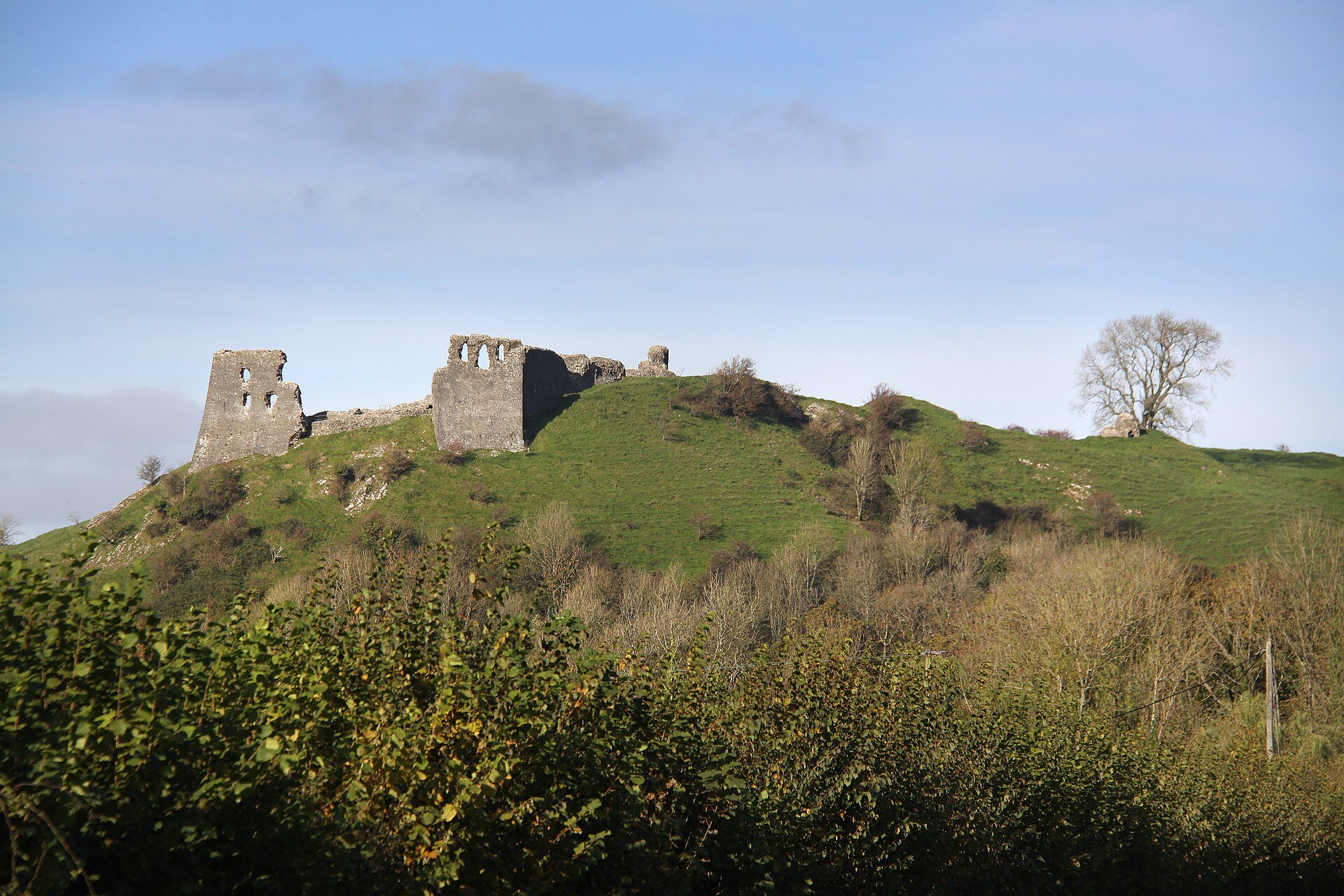
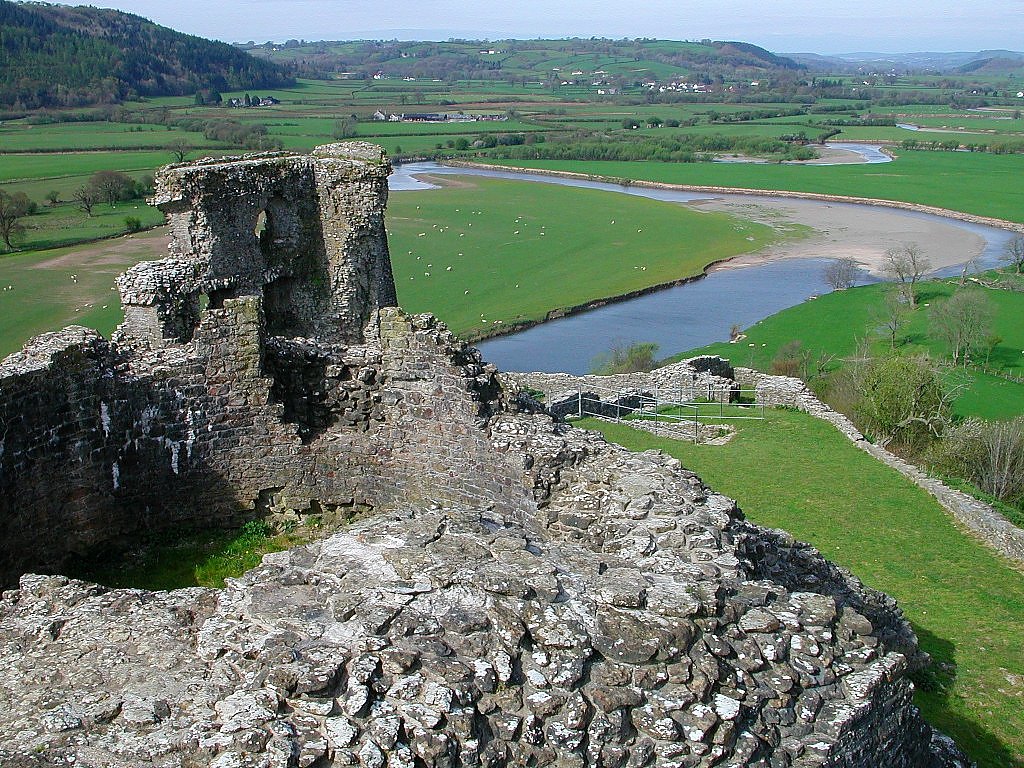
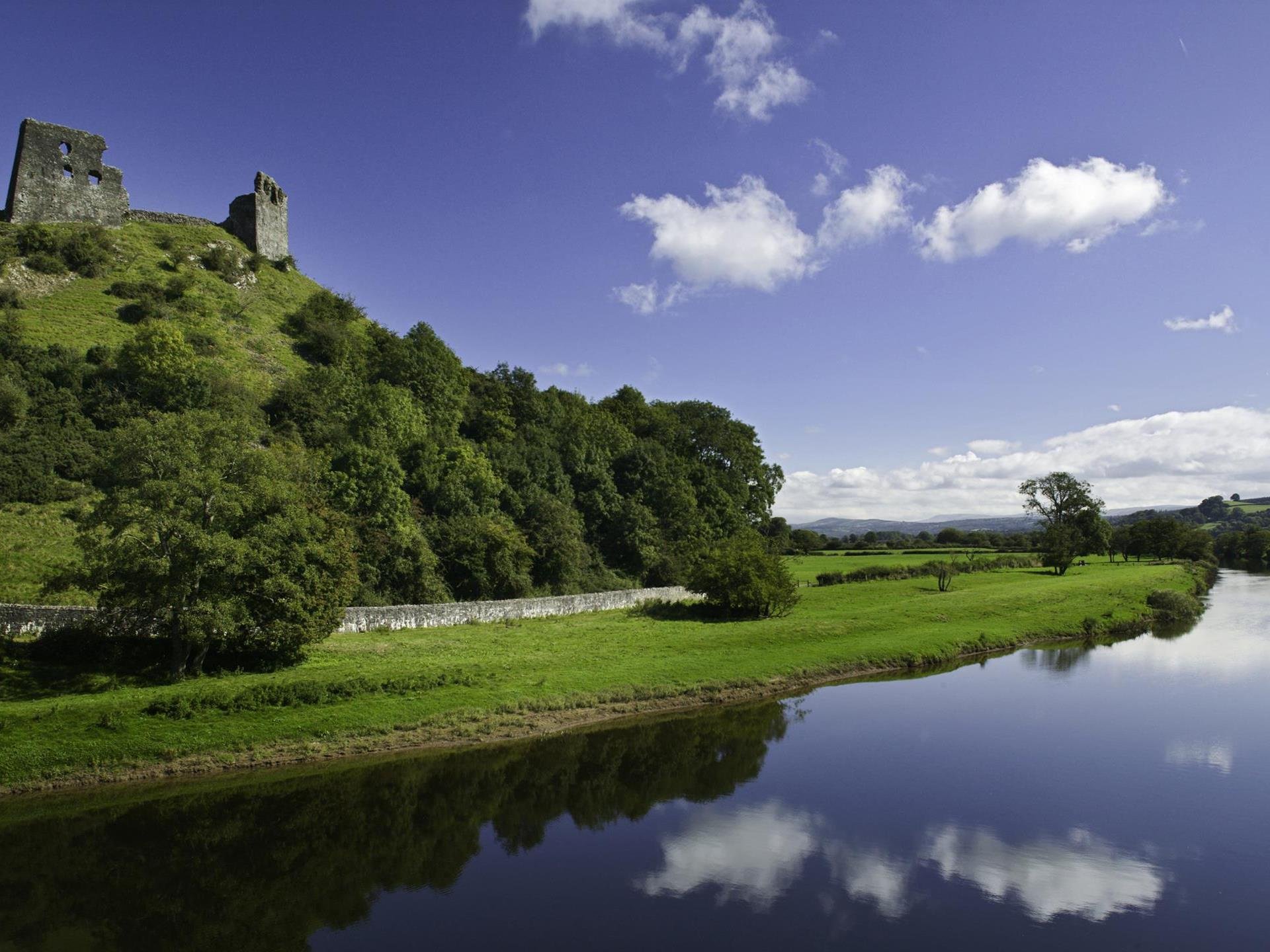
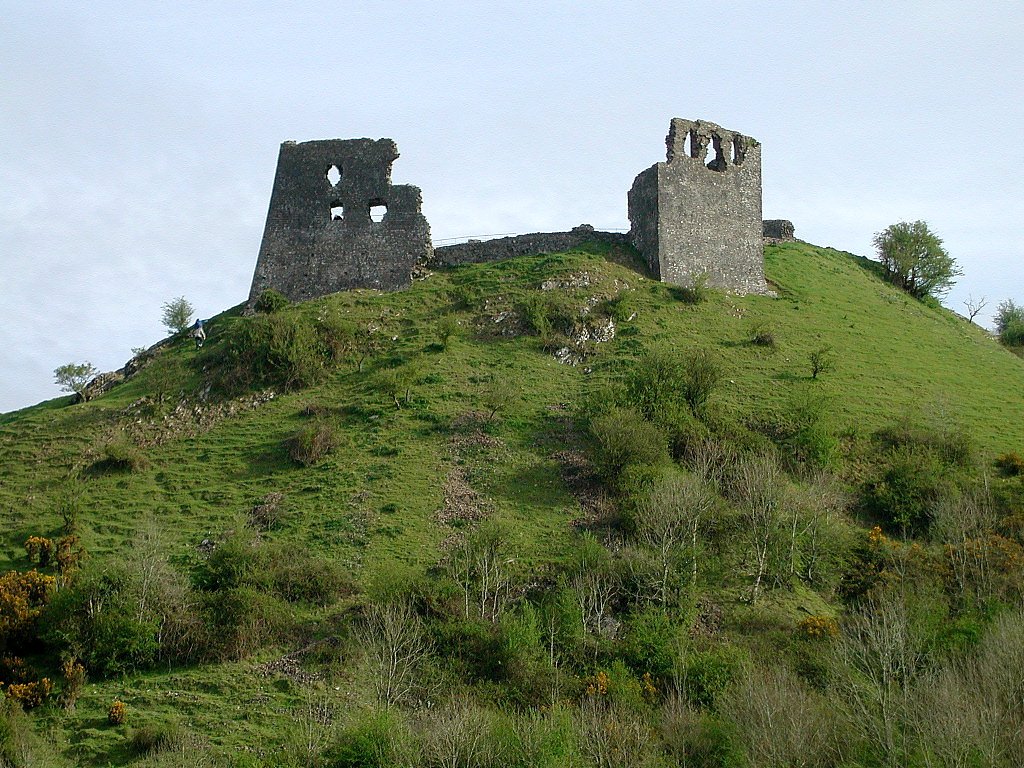
Visiting
Dryslwyn Castle sits on a steep, rocky hill above the River Tywi between Llandeilo and Carmarthen. The site is managed by Cadw and is free to enter.
Opening Times
Open daily from 10 am to 4 pm, with last admission at 3.30 pm or 3.45 pm, depending on source. Closed on 24–26 December and 1 January.
Entry Fee
Free admission for all visitors
Dogs welcome on short leads; occasional restrictions apply during sheep grazing.
Facilities
Small public car park (~15 spaces) opposite the main entrance; no dedicated disabled bays.
No visitor centre, toilets, or refreshment facilities on site.
Paths are steep, uneven, and not suitable for wheelchairs.
Directions
The castle is located beside the B4297, west of a crossroads by Dryslwyn village. Drive along the A40, then turn onto B4297. The car park lies about 800 m from the entrance, across from the B4297 bridge over the Tywi.
Visitor Experience
Expect a steep climb over uneven ground. Bring sturdy footwear and perhaps a walking pole. The site offers dramatic valley views. On the summit, you can examine worn stair treads and low walls. Some original smoke-blackened stones remain from the slighting and burning in the 1400s.
Legends and Stories
Dryslwyn Castle carries a few tales steeped in local lore:
Monks of Talley Abbey recounted in the Annales Cambrie that during the 1287 siege, English troops plundered Llandeilo and its abbey. One account describes monks lamenting:
“The surrounding woods and valleys were filled with their followers and they kept up a great clamour.”
This vivid testimony emphasises the human cost amidst military conflict.
A folk tale preserved locally tells of a secret subterranean tunnel connecting Dryslwyn to nearby Dinefwr Castle. No archaeological evidence supports this, but the story reflects medieval rivalry and intrigue in Deheubarth.
The castle is speculated to be haunted by Y Ladi Wen (“White Lady”), a ghost in Welsh tradition said to guard hidden treasure. While versions connect her to other castles, the association with Dryslwyn echoes local hopes of buried medieval riches and Celtic mythology.
Nearby Attractions
Explore these sites close to Dryslwyn Castle for a fuller day out:
Castell Llansteffan
A coastal Norman fort with commanding sea and estuary views. Like Dryslwyn, it offers rugged terrain and scenic climbs.
Dinefwr Park & Castle (National Trust)
Historic castle ruins, deer park, and Newton House. Entry is free if you walk in from Llandeilo, or there is a small parking fee.
Carreg Cennen Castle
Perched atop a dramatic limestone cliff, this 13th-century ruin offers extensive walks and a tearoom onsite.
Paxton’s Tower
A neo-Gothic folly built in the 19th century. It provides panoramic views across the Tywi Valley and both Dinefwr and Dryslwyn castles.
WWT Llanelli Wetland Centre
A 500‑acre nature reserve ideal for birdwatching and family visits, with trails, hides, and a café .
Pembrey Country Park
500 acres including beach, woodland, bike trails, and a toboggan ride, great for outdoor fun.
Visitor Tips
Wear sturdy walking shoes—paths are steep and uneven
Arrive early to avoid busy periods and secure a car park space
Dogs are allowed but must stay on a lead due to grazing sheep
No toilets or refreshments—bring water and snacks
Expect windy conditions at the summit; take a jacket even in summer
Bring a camera—views of the Tywi Valley are expansive
Combine your visit with Dinefwr or Carreg Cennen Castle for a full day out
Car park is free but has limited spaces, especially on weekends
Download the Cadw site guide beforehand for historical details
FAQs
-
There is a short but steep walk of approximately 10 - 15 minutes from the car park to the castle. The climb involves uneven ground and some loose stones. Visitors with mobility difficulties may find access challenging.
-
No official guided tours are provided. Visitors can explore freely at their own pace. You can download an official Cadw guide or use interpretation boards at the site for historical context.
-
Yes, the site is open year-round, except for Christmas Eve, Christmas Day, Boxing Day, and New Year’s Day. Opening hours are reduced during winter months.
-
Yes, children can enjoy exploring the ruins and hilltop views, but there are no safety barriers on steep sections. Supervise children closely, especially near walls and edges.
-
Public transport is limited. The nearest bus routes stop in Llandeilo, which is about 8 km away. A car is the easiest way to access the site.
Wrapping it Up
Dryslwyn Castle offers a striking example of a native Welsh stronghold. Its hilltop location provides wide views of the Tywi Valley. The site holds a long history of Welsh rule, rebellion, and conquest. Though ruined, key features like the curtain walls and towers remain visible. Visitors experience both medieval heritage and the natural beauty of Carmarthenshire.
Sources
Cadw – Dryslwyn Castle
Official page with details on history, access, and current visitor information.
https://cadw.gov.wales/visit/places-to-visit/castell-dryslwynCastleWales – Dryslwyn Castle
Historical summary including details about Rhys ap Maredudd and the 1287 siege.
https://www.castlewales.com/dryslwyn.htmlMythical Britain – Dryslwyn Castle
History article covering the castle’s origins, development, and architectural features.
https://www.mythicalbritain.co.uk/post/dryslwyn-castle-carmarthenshire-walesMedieval Heritage – Dryslwyn Castle
Detailed description of castle layout, historical events, and archaeological findings.
https://medievalheritage.eu/en/main-page/heritage/wales/dryslwyn-castle/Crazy About Castles – Dryslwyn Castle
Visitor-focused guide with information on parking, access paths, and practical tips.
https://crazyaboutcastles.com/welsh-castles/dryslwyn-castle/Wikipedia – Dryslwyn Castle
General reference for timeline, architectural features, and siege outcomes.
https://en.wikipedia.org/wiki/Dryslwyn_Castle
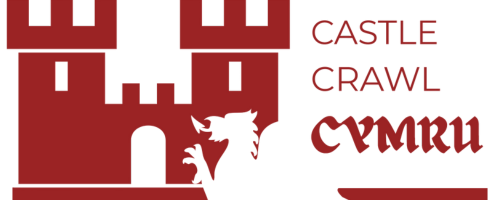

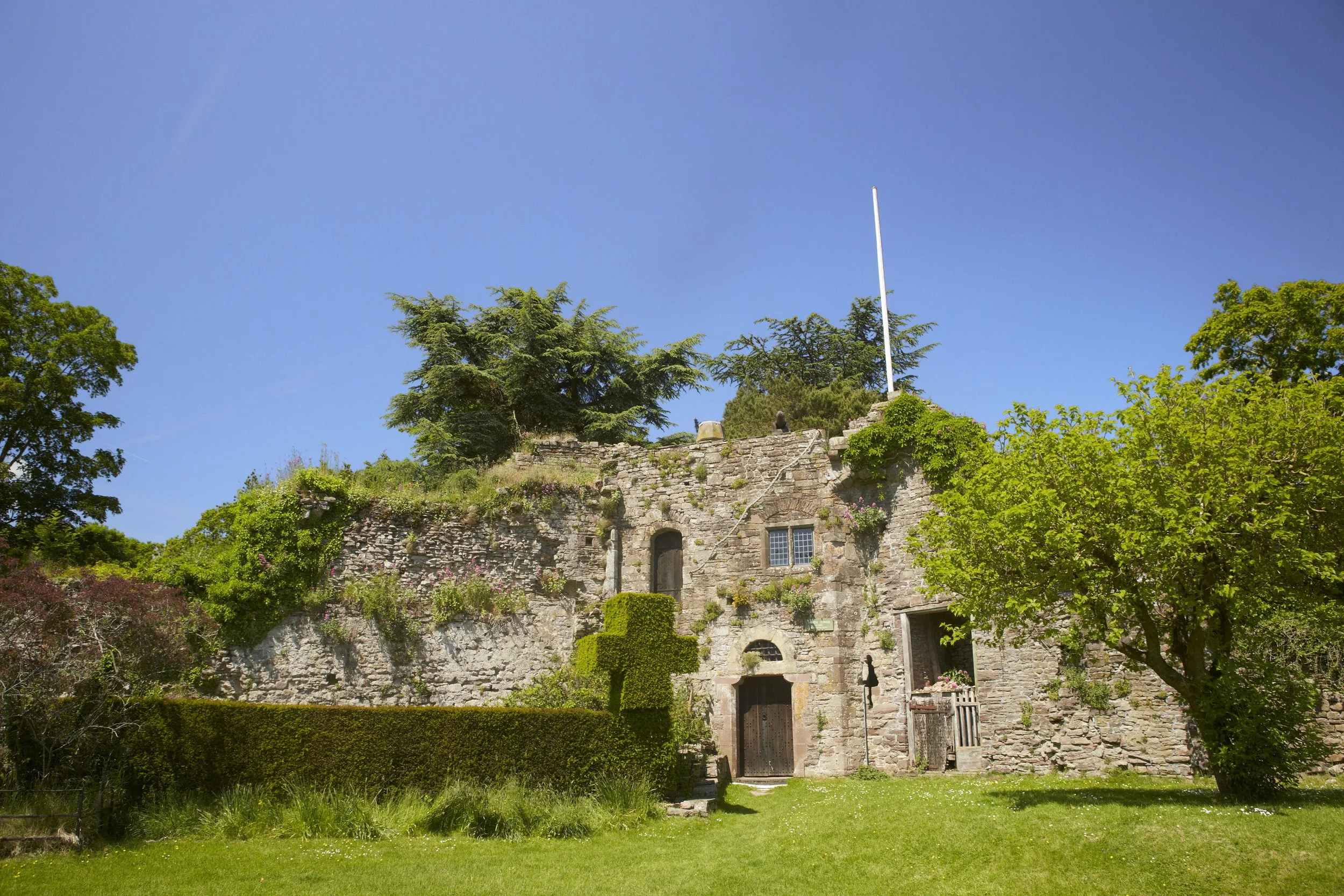
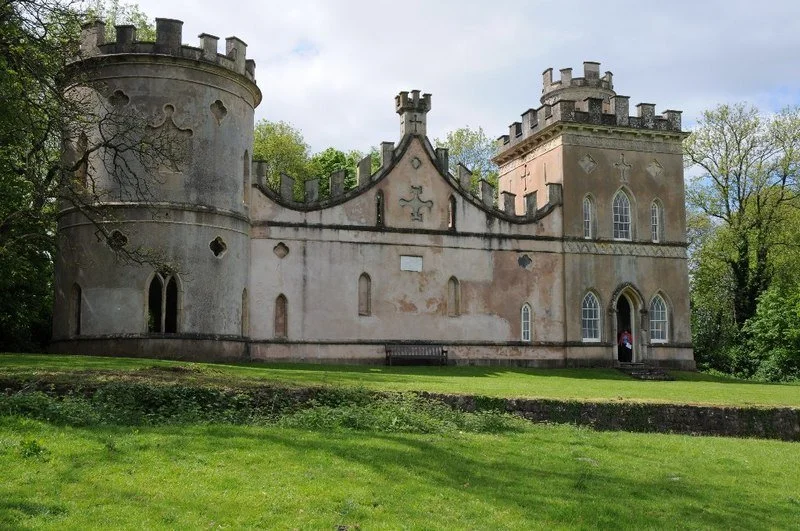
Cardiff Castle is a medieval and Victorian-era site in the centre of Cardiff, the capital of Wales.